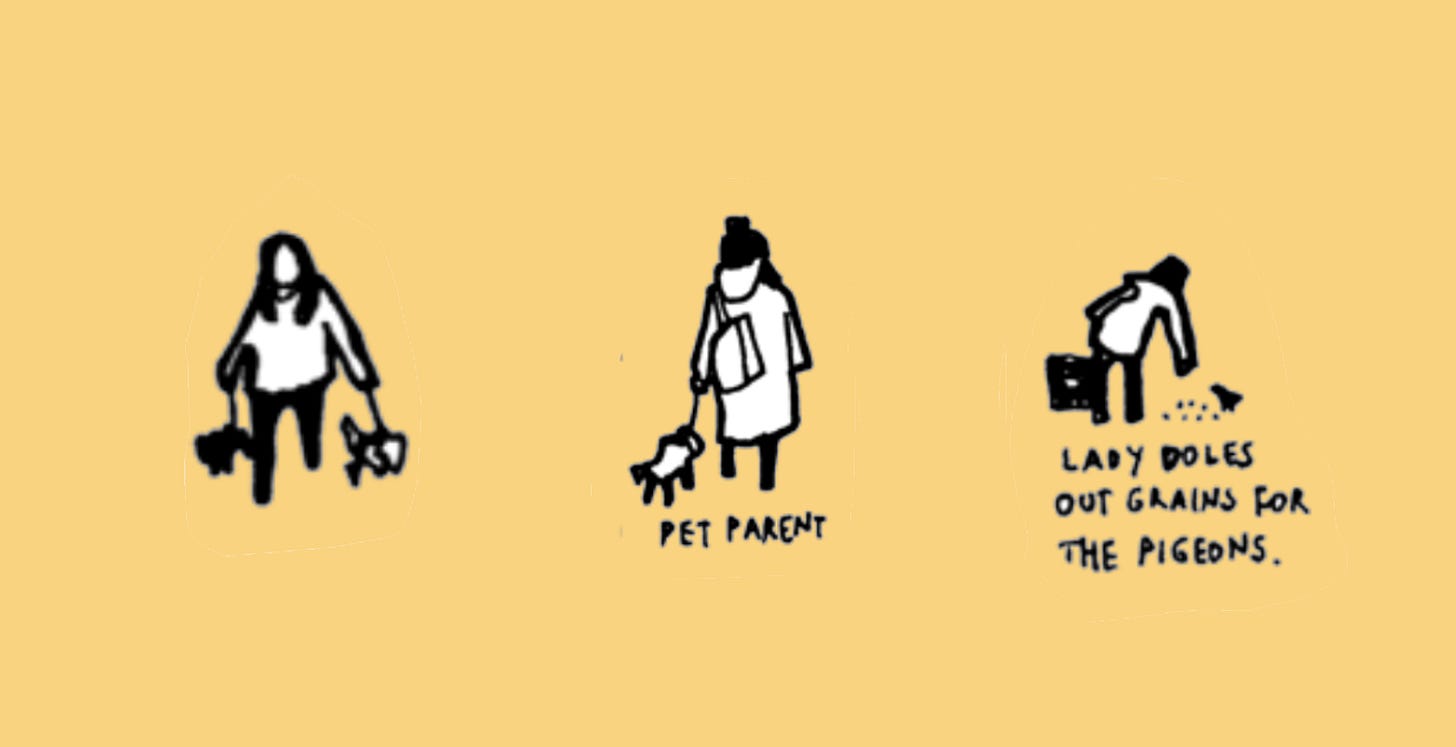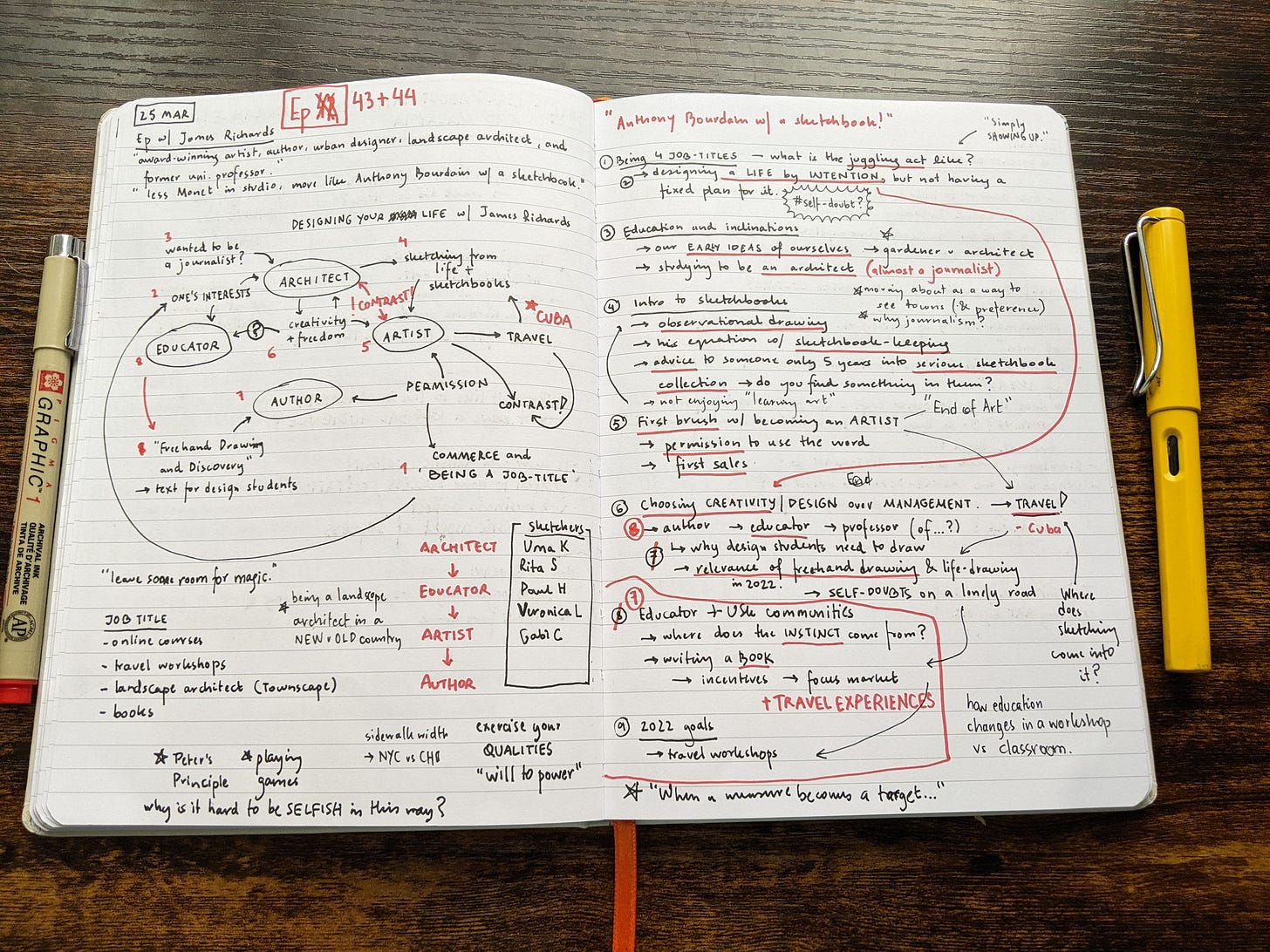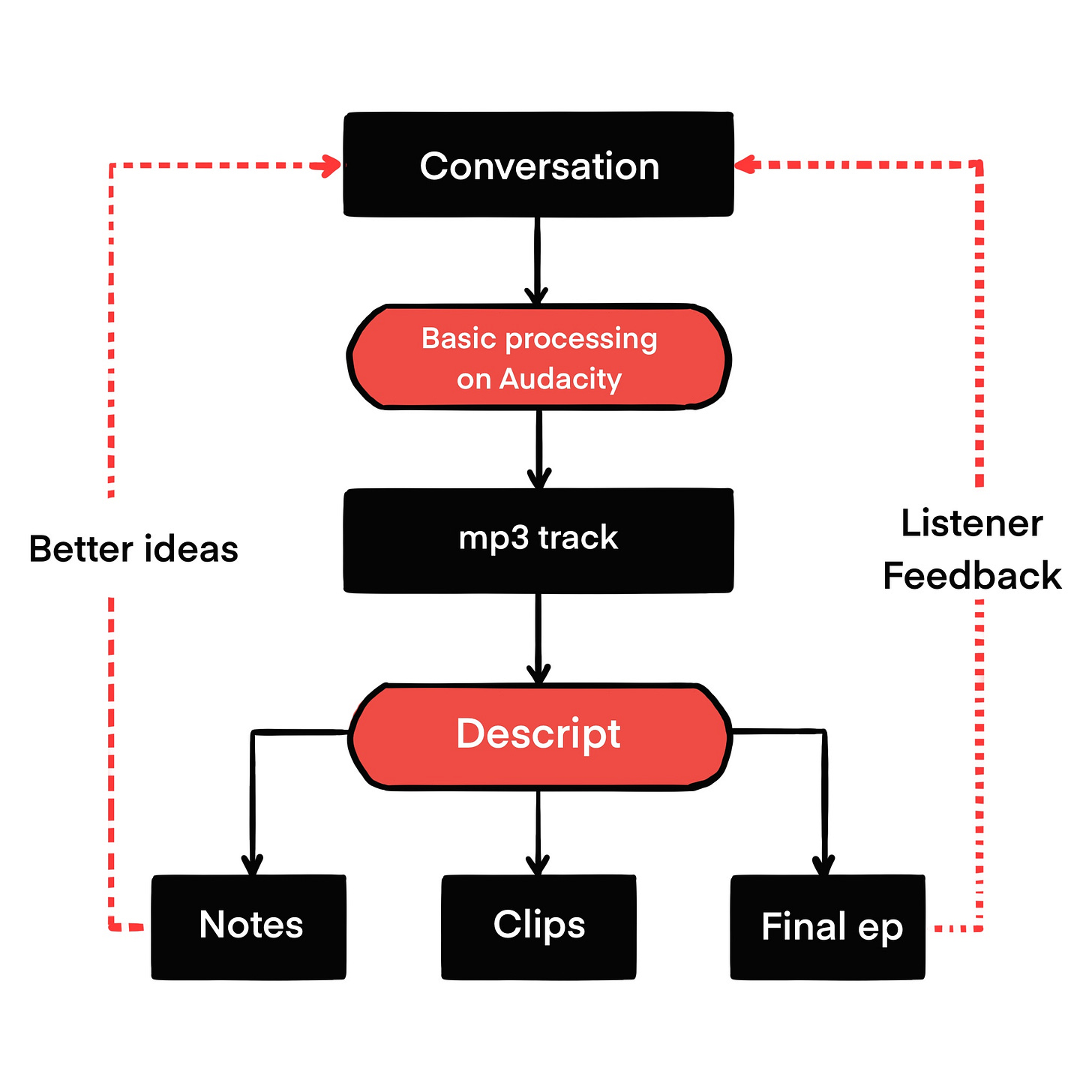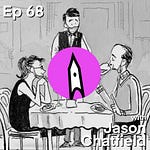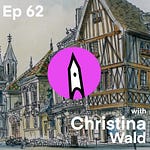Dear Insiders,
You can choose to read this post, but to fully appreciate the message you should listen to this post. In the audio are digressions and elaborations that were edited out of the final text. Such is the beauty of audio. Such is the necessity of text.
Before we begin, I want to congratulate Kerianne for winning last month’s Insider-only storytelling thread for her entry (below). The prize is a signed copy of my award-winning book, SneakyArt of Eau Claire!
Kerianne - please email me a mailing address to send you the book!
This post is the 4th product of my 2022 resolution to LEARN IN PUBLIC. At the bottom, I share links to the first three times.
Today, I want to tell you about -
🎯 why I started the SneakyArt Podcast,
📝 how I make the show,
🏆 what I have learned from being an indie podcaster.
🎙 What is the SneakyArt Podcast?
The SneakyArt Podcast is a space for long-form conversations with artists who paint their environments from observation.
Urban sketching is the global practice of drawing or painting one’s urban environment from observation. And the primary audience of the show are people who identify as ‘urban sketchers’. This group includes professional artists of various hues but for the most part, comprises amateurs/hobbyists who like to draw in their leisure time.
45 episodes in, the SneakyArt Podcast gets thousands of listens per month from listeners in over 50 countries.
I make the show myself - from researching, booking guests, and organizing topics of discussion, to the post-processing, release, and promotion. This means a lot of work, but it is a creative control I enjoy.
My listeners also appreciate this fact, as reflected in the support I receive from them. More on that later.
🎯 Why I started a podcast
(1) I wanted to keep learning. With the onset of the pandemic, I was disconnected from the urban sketching community in Chicago. I learned a lot from being in the company of other artists and desperately wanted to continue doing so.
(2) A gap in the market. As someone who loves podcasts, I was disappointed to discover not a single podcast dedicated to urban sketching. At the same time, as an active member of the global community, I saw it as a fast-growing, highly motivated crowd. This ‘market’ deserved a podcast.
Spinning off the quote, “Write the book you would want to read”, I decided to make the podcast I wanted to hear.
(3) Leveraging my privilege of access. Living in the American Midwest, I was able to attend meetups with two thriving chapters in Minneapolis and Chicago. This put me at a single degree of separation from the biggest names in the global community.
Sharing the benefits of this circumstantial privilege with the greatest number of people seemed an appropriate thing to do.
(4) Media outreach for my brand. Watching fellow artists shift to Instagram Live and Zoom, I realized I did not have the bandwidth to regularly interact with fans/students on live video. A podcast would allow me to nurture an audience but on my own terms.
This page spread includes two sessions of notes (black then red) prior to the conversation, and quick points jotted during the recording (in black).
📝 Making the SneakyArt Podcast
I record conversations on Squadcast, and download .wav files at the end of the session.
InAudacity, I arrange and sync the individual tracks, and run noise processing.The .mp3file from Audacity is loaded onDescriptfor editing.UPDATE: I have now moved my entire workflow to Descript, using its single “Studio Sound” button to automatically clean my raw audio, and arrange the tracks.
In the first edit cycle, I make notes about the episode, and highlight key clips for social media.
In the second edit cycle, I write and record the intro and outro sections, and create the final composition.
The notes help me generate better ideas for future conversations. And the most important feedback loop comes via Substack and BuyMeACoffee.



